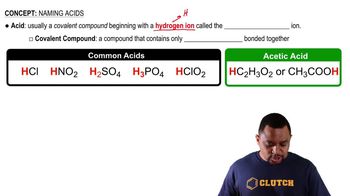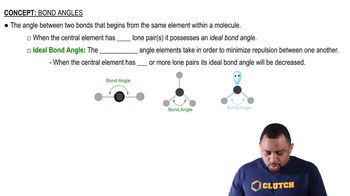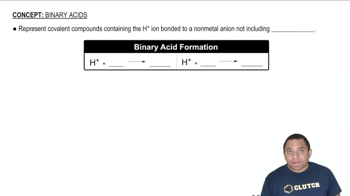Ch.23 - Organic and Biological Chemistry
Chapter 23, Problem 128
Show by drawing structures how the phosphate and sugar components of a nucleic acid are joined.
 Verified step by step guidance
Verified step by step guidance1
Step 1: Understand the basic structure of a nucleotide, which is the building block of nucleic acids. A nucleotide consists of three components: a phosphate group, a sugar molecule (either ribose or deoxyribose), and a nitrogenous base.
Step 2: Focus on the sugar and phosphate components. The sugar in nucleic acids is a pentose sugar, which means it has five carbon atoms. In DNA, this sugar is deoxyribose, and in RNA, it is ribose.
Step 3: Identify the specific carbon atoms in the sugar molecule that are involved in forming the backbone of the nucleic acid. The 3' and 5' carbon atoms of the sugar are crucial for forming the phosphodiester bond.
Step 4: Illustrate the formation of a phosphodiester bond. The phosphate group connects to the 5' carbon of one sugar and the 3' carbon of the next sugar, creating a sugar-phosphate backbone. This bond is formed through a dehydration reaction, releasing a molecule of water.
Step 5: Draw the repeating sugar-phosphate backbone structure. This backbone is a key feature of nucleic acids, providing structural integrity and directionality (5' to 3') to the DNA or RNA strand.
Key Concepts
Here are the essential concepts you must grasp in order to answer the question correctly.
Nucleic Acid Structure
Nucleic acids, such as DNA and RNA, are polymers made up of nucleotide monomers. Each nucleotide consists of a phosphate group, a sugar (deoxyribose in DNA and ribose in RNA), and a nitrogenous base. The structure of nucleic acids is crucial for understanding how genetic information is stored and transmitted.
Recommended video:
Guided course

Acids and Their Structure
Phosphodiester Bond
The phosphate and sugar components of nucleotides are linked by phosphodiester bonds, which form the backbone of nucleic acid strands. This bond occurs between the 5' phosphate group of one nucleotide and the 3' hydroxyl group of the sugar of another nucleotide, creating a stable and directional chain essential for nucleic acid function.
Recommended video:
Guided course

Bond Angles
Directionality of Nucleic Acids
Nucleic acids have a specific directionality, indicated as 5' to 3'. This refers to the orientation of the sugar-phosphate backbone, where the 5' end has a free phosphate group and the 3' end has a free hydroxyl group. Understanding this directionality is vital for processes such as DNA replication and transcription, as enzymes interact with nucleic acids in a specific manner.
Recommended video:
Guided course

Binary Acids
Related Practice
